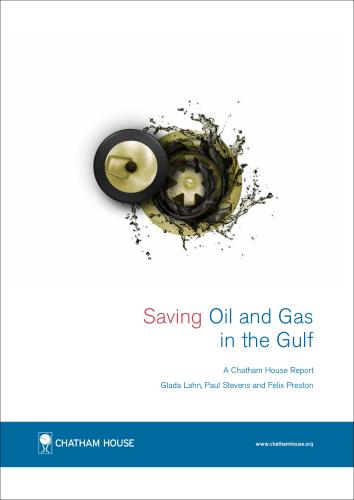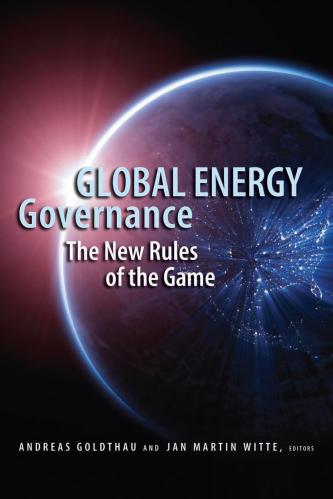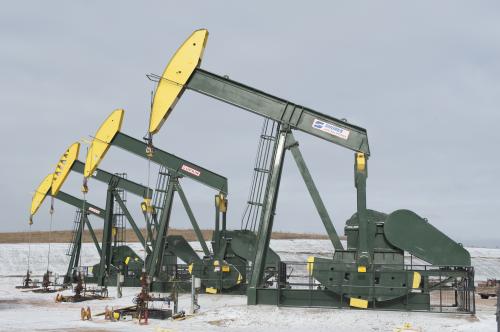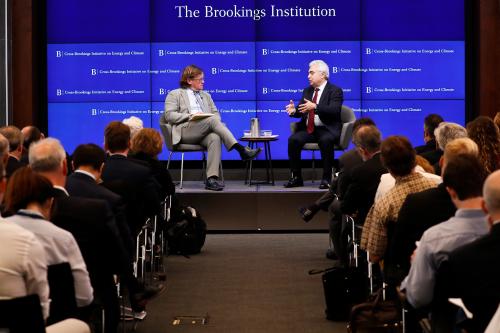I spent last week in Houston at CERAWeek, an annual gathering of energy industry elites, observing the current pulse of the energy sector. The optimism among all parties was palpable. Oil prices are at a moderate level that pleases most everyone in the industry, natural gas supply and demand are growing, and renewables continue to make their mark on the power industry. Conference organizers told me that there were 30 percent more attendees than last year—a tangible sign of the industry’s good mood and spare cash.
However, lurking below the surface of all this good news is a darker truth. The Trump administration has emphasized “energy dominance” and its close ties to the industry, but the administration and the energy titans gathered in Houston are drifting apart. The gap is most striking with Europe’s oil and gas giants, but exists in most corners of the industry. During the conference, Trump administration officials equated the Paris agreement on climate change with rhetoric that the world should abandon fossil fuels and create an energy system based only on renewables. Within the industry—conspicuously in Europe, but also in the United States—leaders generally understand that the energy system is entering a long transition in response to the challenge of climate change, requiring a multitude of approaches to reduce carbon emissions over time. The Trump administration’s regulatory and trade policies are also sometimes incongruous with their stated goal of supporting the U.S. energy sector.
Within the industry, leaders generally understand that the energy system is entering a long transition requiring a multitude of approaches to reduce carbon emissions over time.
At one session, this division was particularly visible. U.S. Energy Secretary Rick Perry opened the day touting the innovation revolution that has swept the U.S. energy industry. However, he contrasted this innovation with what he described as the “mindset of the Paris agreement” that “opposes most energy production, specifically fossil fuels.” He spoke of energy poverty and of providing electricity to the one billion people in the world who lack it today, but also of a nebulous “they” that is “dooming developing countries to a future of poverty and want” without fossil fuels. In stark contrast, the next speaker was Ben Van Beurden, CEO of Shell, who opened his speech with an impassioned plea that society must address climate change. He spoke of how Shell aims to thrive through the coming energy transition, noting that, “The energy landscape is changing fast, so we must change.”
The administration and the industry might at least agree that more production is better—especially more production in the United States. But on that front too, the gap between the administration’s words and deeds really matters. The current administration’s deregulation push is likely to have little impact on oil and gas production, since prices and technology are the primary drivers of production, not regulation. Several speakers at CERAWeek pointed out that the current deregulatory atmosphere may produce a public backlash and greater regulation in the future, an idea I explored before. The industry prefers regulatory certainty when making investment decisions. Permitting is an important exception, with the industry and strongly in favor of streamlined permitting processes for energy infrastructure.
Interior Secretary Ryan Zinke touted the administration’s deregulatory push, saying that, “The last eight years have been pretty rough in this industry.” Production numbers don’t back up his claim—during the last administration, natural gas production rose every year to reach its highest level ever and oil production rose at the fastest rate in the 150-year history of the U.S. oil industry, even as global oil prices experienced a prolonged downturn. The Permian Basin shale oil deposits—in western Texas and eastern New Mexico—are the engine for rapidly expanding U.S. oil output. As Secretary Perry correctly noted, rapidly developing new technology drove this production growth.
Even the administration’s buzzphrase of “energy dominance” is wrongheaded for an industry that trades global commodities. It raises questions about zero-sum behavior from the United States and its reliability as a supplier. Fatih Birol, executive director of the International Energy Agency, noted that, “No nation is an island” with respect to energy supply. Producers and consumers are joined together in an interconnected energy market, as I previously noted. A smoothly functioning market limits overall U.S. influence, but is good for producers and consumers alike, including the United States. Birol suggested that the United States not confuse its coming role as the world’s largest oil producer with that of the world’s largest exporter, since the United States will continue to import oil for the foreseeable future.
The timing of President Trump’s tariffs on imported steel and aluminum could not have been worse for the industry gala. He announced the tariffs just days before the opening of CERAWeek, and nearly everyone who spoke on the matter condemned them. Pipeline companies were particularly opposed to the tariffs, noting that the steel used in long-distance pipelines is not produced in the United States. Liquefied natural gas terminals and petrochemical production are two other growing U.S. industries where the new tariffs could bite. (The administration belatedly heard these messages and has invited the industry to apply for exceptions.)
The administration’s blind spot on climate change may prove, over the long term, to inflict the biggest wound on the U.S. energy industry. Birol best described the energy sector’s challenge: “The problem is not energy, it is emissions. Energy is good and necessary.” The Trump administration and the energy industry definitely agree on the second part of that statement.
But finding a happy medium overall is more difficult, especially when the world’s most important government seems unable to grasp the necessity and reality of a transition toward lower-carbon energy and the interconnected nature of the global energy market.










Commentary
The growing gap between the energy sector and the Trump administration
March 16, 2018